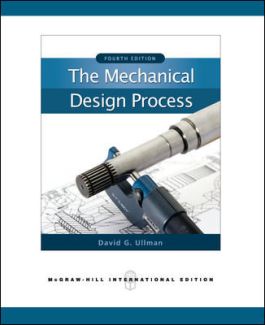EBOOK: The Mechanical Design Process
4th Edition
0077157249
·
9780077157241
© 2009 | Published: May 16, 2009
The fourth edition of The Mechanical Design Process combines a practical overview of the design process with case material and real-life engineering insights. Ullman's work as an innovative designer comes through consistently, and has made this book …
Read More
Request More Info
After you purchase your eBook, you will need to download VitalSource Bookshelf, a free app. Then login or create an account and enter the code from your order confirmation email to access your eBook.
- Access the eBook anytime, anywhere: online or offline
- Create notes, flashcards and make annotations while you study
- Full searchable content: quickly find the answers you are looking for
CHAPTER 1 Why Study the Design Process? 1
CHAPTER 2 Understanding Mechanical Design 25
CHAPTER 3 Designers and Design Teams 47
CHAPTER 4 The Design Process and Product Discovery 81
CHAPTER 5 Planning for Design 111
CHAPTER 6 Understanding the Problem and the Development of Engineering Specifications 143
CHAPTER 7 Concept Generation 171
CHAPTER 8 Concept Evaluation and Selection 213
CHAPTER 9 Product Generation 241
CHAPTER 10 Product Evaluation for Performance and the Effects of Variation 279
CHAPTER 11 Product Evaluation: Design For Cost, Manufacture, Assembly, and Other Measures 315
CHAPTER 12 Wrapping Up the Design Process and Supporting the Product 363
APPENDIX A Properties of 25 Materials Most Commonly Used in Mechanical Design 379
APPENDIX B Normal Probability 397
APPENDIX C The Factor of Safety as a Design Variable 403
APPENDIX D Human Factors in Design 415
Index 427
The fourth edition of The Mechanical Design Process combines a practical overview of the design process with case material and real-life engineering insights. Ullman's work as an innovative designer comes through consistently, and has made this book a favorite with readers. New in this edition are examples from industry and over twenty online templates that help students prepare complete and consistent assignments while learnign the material.
This text is appropriate primarily for the Senior Design course taken by mechanical engineering students, though it can also be used in design courses offered earlier in the curriculum. Working engineers also find it to be a readable, practical overview of the modern design process.

